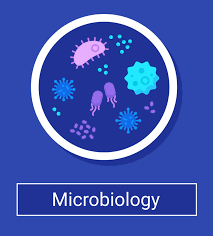- Home
-
Test Categories
- Diabetes
- Urinary
- Thyroid
- RTPCR
- Genetic
- Cancer
- Haematology
- Biochemistry
- Serology & Immunology
- Clinical Pathology
- Cytology
- Microbiology
- Endocrinology
- Histopathology
- MOLECULAR DIAGNOSTICS
- Pregnancy(Biochemistry)
- Liver
- Prostate
- Fertility
- Gastro
- Autoimmune Disorders
- Heart
- Kidney
- Vitamins
- Tuberculosis (TB)
- Anemia
- Fever
- Allergy
- Blood Tests Rare
- Profiles
- Packages
- About Us
- Why Choose Us
- Upload Prescription
- Corporate Wellness
- Contact Us

-
Overview
The Acid-Fast Bacilli (AFB) test is a diagnostic test primarily used to detect the presence of mycobacteria, including Mycobacterium tuberculosis, which causes tuberculosis (TB). The test involves examining samples such as sputum, urine, or other body fluids under a microscope after staining them with special dyes that highlight acid-fast bacilli. AFB tests can be performed using microscopy, culture, or molecular methods like PCR. The test is crucial in diagnosing active TB and other mycobacterial infections, guiding appropriate treatment to prevent the spread of these infections.
Patient Preparation for AFB Test
Fasting Requirements:
- Fasting: No fasting is generally required for the AFB test, especially for sputum samples. However, for samples like gastric lavage or other specific fluids, the doctor may provide special instructions.
Other Preparations:
- For Sputum Collection:
- Hydration: It’s beneficial for the patient to stay hydrated to facilitate sputum production.
- Timing: Early morning samples are preferred as they are more concentrated and likely to contain the bacteria.
- Oral Hygiene: The patient should rinse their mouth with water before collecting the sample to remove any food particles, which helps avoid contamination.
- For Other Samples: Follow any specific instructions given by the healthcare provider for other types of samples (e.g., urine or gastric aspirates).
- For Sputum Collection:
Sample Collection Process by Speediagno Phlebotomist or Technician:
Speediagno ensures that sample collection for AFB testing is performed with strict adherence to hygiene and safety protocols to prevent contamination and ensure accurate results.
Preparation for Sample Collection:
- Identify the Patient: The healthcare provider confirms the patient’s identity using at least two identifiers (e.g., name and date of birth).
- Consent and Explanation: The procedure is explained to the patient, and consent is obtained, helping to make the patient feel comfortable.
Sputum Collection Process (Common Method for AFB):
- Hand Hygiene and PPE: The healthcare provider performs hand hygiene and wears appropriate PPE, including gloves, masks, and eye protection, to maintain infection control standards.
- Patient Positioning: The patient is asked to sit comfortably and take deep breaths to help produce sputum from the lungs.
- Collection Process:
- The patient is instructed to cough deeply to bring up sputum from the lungs, not saliva from the mouth. This should be done in a well-ventilated area or sputum collection booth to minimize the risk of spreading infectious aerosols.
- The patient expectorates the sputum into a sterile container with a tight-fitting lid provided by the technician. The sample should be thick, mucus-like, and not just saliva.
- Labeling and Sealing: The sputum container is properly sealed and labeled with the patient’s details, including the date and time of collection.
Alternative Sample Collection:
- Urine: Collected in a sterile container, usually early in the morning, over consecutive days to increase the likelihood of detecting mycobacteria.
- Gastric Lavage or Bronchoalveolar Lavage: Performed by medical professionals, often in a clinical setting, especially for patients who cannot produce sputum.
Post-Collection Care:
- Sample Handling and Transport: The sample is transported immediately to the laboratory under appropriate conditions to prevent degradation or contamination. For sputum, refrigeration is often required if immediate transport is not possible.
- Safety Protocols: Used containers, PPE, and any other disposable items are handled as biohazardous waste and disposed of according to safety guidelines.
Processing in the Laboratory:
- Microscopy: The sample is stained with Ziehl-Neelsen or fluorescent stains and examined under a microscope for acid-fast bacilli.
- Culture: The sample may also be cultured in special media to grow and identify the specific mycobacteria, which can take several weeks.
This comprehensive and careful approach to the AFB test ensures accurate detection of mycobacterial infections, crucial for timely diagnosis, treatment, and prevention of disease transmission, particularly in cases of tuberculosis.
All test groups and subgroup
-
ACID -FAST BACILLI - AFB
-
Findings
-
Nature Of Specimen
-
